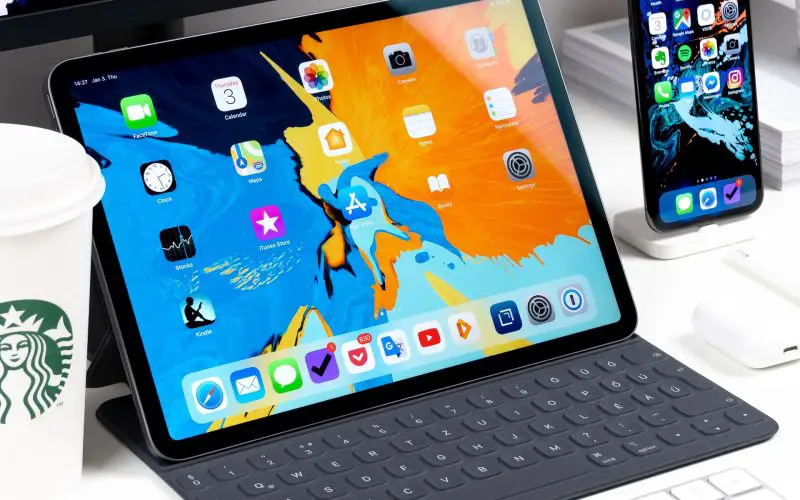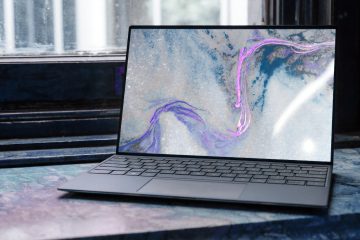Computer operating systems serve as the foundation upon which our technological experiences are built. From the sleek interfaces of modern desktop systems to the compact ecosystems of mobile devices, operating systems play a pivotal role in shaping our interactions with computers and the digital world. They act as the invisible orchestrators, managing hardware resources, enabling software applications, and providing us with a seamless user experience.
In this article, we embark on a fascinating journey through the diverse landscape of computer operating systems. We delve into the intricacies of these software marvels, exploring their evolution, features, and the unique purposes they serve. From mainstream giants to niche platforms, each operating system offers its own set of strengths and caters to specific user needs, be it for personal computing, mobile devices, servers, or specialized environments.
Throughout our exploration, we uncover the fundamental principles that underpin the design and functionality of operating systems. We marvel at their ability to transform mere hardware into powerful tools of productivity, entertainment, and communication. With each operating system’s distinctive characteristics, we witness the culmination of decades of innovation, engineering, and user-centric design.
As we navigate through this rich tapestry of operating systems, we come to appreciate the vast array of choices available to us. Whether it’s the intuitiveness of a graphical user interface, the precision of a real-time system, or the flexibility of an open-source platform, there is an operating system tailored to meet every individual’s unique preferences and requirements.
Join us on this captivating exploration as we unravel the mysteries and unveil the stories behind these remarkable creations. From the early pioneers to the modern powerhouses, we shed light on the multitude of operating systems that shape our digital landscape. So, fasten your seatbelts and prepare to embark on an enlightening journey that will leave you with a deeper understanding and appreciation for the intricate world of computer operating systems.
List of computer operating systems
| Operating System | Description |
|---|---|
| Windows 10 | Windows 10 is a widely used operating system developed by Microsoft. It offers a user-friendly interface and supports a wide range of software applications. |
| macOS Big Sur | macOS Big Sur is the latest version of Apple’s operating system for their Mac computers. It introduces a refreshed design and improved performance. |
| Linux Ubuntu | Ubuntu is a popular Linux distribution known for its ease of use and strong community support. It offers a free and open-source alternative to proprietary operating systems. |
| Android | Android is a mobile operating system developed by Google. It powers a majority of smartphones and tablets and provides access to a wide range of apps through the Google Play Store. |
| iOS | iOS is Apple’s mobile operating system, designed specifically for their iPhones and iPads. It provides a seamless user experience and tight integration with other Apple devices. |
| Chrome OS | Chrome OS is a lightweight operating system developed by Google. It is primarily used on Chromebook laptops and relies heavily on cloud-based applications and storage. |
| Windows Server 2019 | Windows Server 2019 is a server operating system from Microsoft. It offers enterprise-level features and capabilities for managing network resources and services. |
| CentOS | CentOS is a Linux distribution based on the source code of Red Hat Enterprise Linux (RHEL). It is known for its stability and is widely used in server environments. |
| FreeBSD | FreeBSD is a free and open-source Unix-like operating system known for its advanced networking and security features. It is often used in server and embedded systems. |
| Solaris | Solaris is a Unix operating system developed by Oracle. It is known for its scalability and reliability, making it a popular choice for enterprise-level deployments. |
| IBM z/OS | z/OS is the flagship operating system for IBM mainframe computers. It provides a secure and stable environment for running critical business applications. |
| IBM i | IBM i (formerly known as OS/400) is an operating system for IBM Power Systems servers. It offers an integrated environment for running business applications. |
| HP-UX | HP-UX is a Unix operating system developed by Hewlett Packard Enterprise. It is designed for use on HP’s Itanium-based servers and provides high availability features. |
| AIX | AIX is IBM’s Unix operating system for their Power Systems servers. It offers advanced features such as workload management and virtualization. |
| Chrome OS | Chrome OS is a lightweight operating system developed by Google. It is primarily used on Chromebook laptops and relies heavily on cloud-based applications and storage. |
| Fedora | Fedora is a community-driven Linux distribution sponsored by Red Hat. It focuses on providing the latest software packages and technologies to users. |
| OpenSUSE | OpenSUSE is a Linux distribution known for its user-friendly interface and strong support for the KDE desktop environment. It is available in both community and enterprise editions. |
| Arch Linux | Arch Linux is a lightweight and highly customizable Linux distribution. It follows a “do-it-yourself” approach, allowing users to build their own system from the ground up. |
| Gentoo Linux | Gentoo Linux is a distribution that emphasizes customization and performance optimization. Users can compile software from source code, tailored to their specific hardware. |
| Slackware Linux | Slackware Linux is one of the oldest surviving Linux distributions. It aims for simplicity and stability, making it a popular choice for experienced users. |
| elementary OS | elementary OS is a Linux distribution that focuses on providing an elegant and user-friendly experience. It resembles the design principles of macOS, making it visually appealing. |
| Haiku | Haiku is an open-source operating system inspired by the now-discontinued BeOS. It offers a modern interface and is known for its responsiveness. |
| ReactOS | ReactOS is an open-source operating system that aims to be compatible with Microsoft Windows applications and drivers. It provides an alternative for users seeking a Windows-like experience. |
| Plan 9 | Plan 9 is a distributed operating system developed by Bell Labs. It emphasizes a decentralized approach and provides a unique network-centric file system. |
| QNX | QNX is a real-time operating system commonly used in embedded systems and industrial applications. It offers high reliability and fast response times. |
| BeOS | BeOS was an operating system developed by Be Inc. It was known for its multimedia capabilities and efficient use of system resources. Although discontinued, its influence is still felt in modern systems. |
| Tizen | Tizen is a Linux-based operating system developed primarily for Samsung devices, such as smart TVs and smartwatches. It provides a platform for creating applications across multiple device types. |
| KaiOS | KaiOS is a lightweight operating system designed for feature phones. It offers smartphone-like functionalities and supports essential apps such as WhatsApp and Google Assistant. |
| Oracle Linux | Oracle Linux is a distribution based on Red Hat Enterprise Linux (RHEL). It is optimized for Oracle hardware and software and includes additional features and tools. |
| Mint | Linux Mint is a user-friendly distribution based on Ubuntu. It focuses on providing a familiar and intuitive desktop environment for both new and experienced users. |
| CentOS Stream | CentOS Stream is a rolling-release Linux distribution based on CentOS. It provides a middle ground between stability and access to newer software packages. |
| Mageia | Mageia is a community-driven Linux distribution that originated from Mandriva Linux. It aims to provide a reliable and feature-rich computing experience. |
| Oracle Solaris | Oracle Solaris is a Unix operating system developed by Oracle. It inherits features from the original Sun Microsystems’ Solaris and offers advanced technologies for enterprise deployments. |
| Raspbian | Raspbian is a Debian-based operating system specifically designed for the Raspberry Pi single-board computers. It provides a lightweight and optimized environment for the Pi’s hardware. |
| Manjaro Linux | Manjaro Linux is an Arch Linux-based distribution that aims to provide an accessible and user-friendly experience. It offers a variety of desktop environments to choose from. |
| CentOS Linux | CentOS Linux is a community-supported distribution based on the sources of Red Hat Enterprise Linux (RHEL). It is known for its stability and long-term support. |
| Clear Linux | Clear Linux is a Linux distribution developed by Intel. It is optimized for performance and targets developers and advanced users. |
| SUSE Linux Enterprise | SUSE Linux Enterprise is a commercial Linux distribution tailored for enterprise-level deployments. It offers advanced features, security, and support options. |
| Android Wear OS | Wear OS is Google’s operating system for smartwatches and wearables. It provides access to apps, notifications, and fitness tracking features. |
| Remix OS | Remix OS is an Android-based operating system designed to run on personal computers. It offers a desktop-like experience and supports running Android apps in a windowed mode. |
| LineageOS | LineageOS is an open-source operating system based on Android. It focuses on privacy and customization, allowing users to control their device to a high degree. |
| DragonFly BSD | DragonFly BSD is a free and open-source operating system known for its scalability and performance optimizations. It offers a stable platform for both desktop and server use. |
| OpenBSD | OpenBSD is a security-focused operating system known for its emphasis on code correctness and proactive security measures. It is widely used in security-conscious environments. |
| NetBSD | NetBSD is a free and open-source operating system known for its portability and wide range of supported hardware architectures. It focuses on stability and simplicity. |
| MINIX | MINIX is a Unix-like operating system known for its simplicity and educational purposes. It served as an inspiration for the development of Linux and other modern systems. |
| GNU Hurd | GNU Hurd is an operating system kernel developed by the Free Software Foundation as part of the GNU Project. It aims to provide a flexible and extensible system. |
| Inferno | Inferno is an operating system developed by Bell Labs. It focuses on distributed computing and provides a lightweight and secure environment for running applications. |
| Planix | Planix is an operating system that aims to combine the best features of Plan 9 and Unix-like systems. It focuses on simplicity, scalability, and security. |
| AROS | AROS is an open-source operating system inspired by the AmigaOS. It aims to recreate the Amiga computing experience and is compatible with a wide range of hardware. |
| DOS | DOS (Disk Operating System) is a single-user, command-line-based operating system developed by Microsoft. It was widely used in the early days of personal computers. |
| Windows XP | Windows XP was a widely popular operating system released by Microsoft in 2001. It introduced a more user-friendly interface and improved stability compared to its predecessors. |
| Windows 7 | Windows 7 was a highly successful operating system released by Microsoft in 2009. It offered improved performance, enhanced security features, and a refined user interface. |
| Windows 8.1 | Windows 8.1 was an operating system released by Microsoft as an update to Windows 8. It introduced several improvements, including the return of the Start button and enhanced app integration. |
| Windows Server 2016 | Windows Server 2016 was a server operating system from Microsoft. It introduced features such as enhanced security, improved virtualization capabilities, and support for containers. |
| Windows Server 2012 R2 | Windows Server 2012 R2 was a server operating system from Microsoft. It offered improved scalability, enhanced storage options, and better virtualization support compared to its predecessor. |
| Windows Server 2008 R2 | Windows Server 2008 R2 was a server operating system known for its stability and reliability. It introduced features such as improved management tools and enhanced security. |
| Windows NT | Windows NT was a series of operating systems developed by Microsoft. It introduced a new architecture and provided a foundation for subsequent Windows versions. |
| OS/2 | OS/2 is an operating system originally developed by Microsoft and IBM. It offered advanced multitasking capabilities and was popular in the late 1980s and early 1990s. |
| AmigaOS | AmigaOS is an operating system developed for the Amiga line of computers. It was known for its advanced multimedia capabilities and innovative features during its prime. |
| Commodore 64 BASIC | Commodore 64 BASIC was the built-in programming language and operating environment for the Commodore 64 home computer. It provided a simple yet powerful interface for programming. |
| TRS-DOS | TRS-DOS is an operating system developed for the Tandy/Radio Shack TRS-80 line of computers. It offered a command-line interface and supported a variety of applications. |
| Atari TOS | Atari TOS (The Operating System) was developed for Atari ST computers. It provided a graphical user interface and supported a wide range of software applications. |
| Palm OS | Palm OS was an operating system developed for Palm handheld devices, such as personal digital assistants (PDAs). It focused on simplicity and provided a range of productivity features. |
| Mac OS Classic | Mac OS Classic, also known as Mac OS System, was the operating system used on Apple Macintosh computers before the transition to Mac OS X (now macOS). |
| Windows Phone | Windows Phone was Microsoft’s mobile operating system designed for smartphones. It featured a unique user interface and integration with Microsoft services. |
| BlackBerry OS | BlackBerry OS was the operating system used on BlackBerry smartphones. It offered strong security features and was popular among business professionals. |
| Symbian OS | Symbian OS was a mobile operating system used on Nokia and other mobile devices. It provided a customizable interface and a wide range of applications. |
| WebOS | WebOS was an operating system developed by Palm (later acquired by HP) for smartphones and tablets. It focused on a card-based multitasking interface and web technologies. |
| Windows Mobile | Windows Mobile was a mobile operating system developed by Microsoft for smartphones and pocket PCs. It provided a familiar Windows-like experience on mobile devices. |
| MeeGo | MeeGo was an open-source operating system developed by Nokia and Intel for smartphones, tablets, and other mobile devices. It aimed to combine the best of Maemo and Moblin platforms. |
| Tizen | Tizen is a Linux-based operating system developed primarily for Samsung devices, such as smart TVs and smartwatches. It provides a platform for creating applications across multiple device types. |
| Ubuntu Touch | Ubuntu Touch is a mobile operating system based on Ubuntu Linux. It aimed to provide a unified experience across different form factors, including smartphones and tablets. |
| BlackBerry 10 | BlackBerry 10 was an operating system developed by BlackBerry for their smartphones. It featured a gesture-based interface and strong focus on productivity. |
| Windows RT | Windows RT was a version of Windows designed for devices using ARM architecture, such as tablets. It offered a touch-centric interface and supported only specific applications. |
| KaiOS | KaiOS is a lightweight operating system designed for feature phones. It offers smartphone-like functionalities and supports essential apps such as WhatsApp and Google Assistant. |
| Jolla Sailfish OS | Sailfish OS is a mobile operating system developed by Jolla. It provides a gesture-based interface and supports Android applications alongside native Sailfish apps. |
| Firefox OS | Firefox OS, also known as Boot to Gecko (B2G), was an open-source operating system developed by Mozilla. It aimed to create a fully web-based mobile platform. |
| BlackBerry Tablet OS | BlackBerry Tablet OS was an operating system developed for the BlackBerry PlayBook tablet. It offered a unique multitasking interface and supported BlackBerry apps. |
| MxTrix | MxTrix is an operating system designed for the Matrix series of smartphones and wearable devices. It provides advanced security and privacy features. |
| HarmonyOS | HarmonyOS is an operating system developed by Huawei. It is designed to work across multiple devices, including smartphones, tablets, TVs, and IoT devices. |
| Ubuntu Core | Ubuntu Core is a minimal version of Ubuntu designed for Internet of Things (IoT) devices. It focuses on security and offers a snap-based application model. |
| PlayStation OS | PlayStation OS is a specialized operating system developed by Sony for their PlayStation consoles. It provides a gaming-centric interface and multimedia capabilities. |
| Nintendo Switch OS | Nintendo Switch OS is the operating system used on the Nintendo Switch gaming console. It provides a user-friendly interface and supports gaming and multimedia applications. |
| Xbox OS | Xbox OS is the operating system used on Microsoft’s Xbox gaming consoles. It offers a seamless gaming experience and integrates with Xbox Live services. |
| tvOS | tvOS is the operating system used on Apple TV devices. It provides a platform for streaming media, gaming, and running applications on television screens. |
| Android TV | Android TV is a version of Android specifically designed for smart TVs and set-top boxes. It offers a user-friendly interface and access to a variety of apps and streaming services. |
| Fire OS | Fire OS is a customized version of Android developed by Amazon for their Fire tablets and Fire TV devices. It integrates with Amazon services and offers a unique user experience. |
| Chrome OS | Chrome OS is a lightweight operating system developed by Google. It is primarily used on Chromebook laptops and relies heavily on cloud-based applications and storage. |
| EMUI | EMUI (Emotion UI) is an operating system developed by Huawei for their smartphones and tablets. It provides a customized user interface and integrates with Huawei services. |
| One UI | One UI is an operating system developed by Samsung for their smartphones, tablets, and wearables. It offers a user-friendly interface and focuses on improving one-handed usability. |
| OxygenOS | OxygenOS is an operating system developed by OnePlus for their smartphones. It provides a clean and customizable interface, aiming for a smooth user experience. |
| Fuchsia OS | Fuchsia OS is an open-source operating system developed by Google. It is designed to be a flexible and scalable platform that can run on a wide range of devices. |
| HarmonyOS | HarmonyOS is an operating system developed by Huawei. It is designed to work across multiple devices, including smartphones, tablets, TVs, and IoT devices. |
| Android Wear OS | Wear OS is Google’s operating system for smartwatches and wearables. It provides access to apps, notifications, and fitness tracking features. |
| Real-time operating systems (RTOS) | Real-time operating systems are designed for applications that require deterministic and predictable response times. They are commonly used in embedded systems and critical applications such as aerospace and medical devices. Examples include VxWorks, FreeRTOS, and RTLinux. |
| Container operating systems | Container operating systems are lightweight operating systems optimized for running containerized applications. They provide minimal overhead and fast startup times. Examples include CoreOS, RancherOS, and Atomic Host. |
| Hypervisors | Hypervisors, also known as virtual machine monitors (VMM), are operating systems that enable the creation and management of virtual machines. They allow multiple operating systems to run simultaneously on a single physical machine. Examples include VMware ESXi, Microsoft Hyper-V, and KVM. |
| Mainframe operating systems | Mainframe operating systems are designed for high-performance computing and large-scale data processing. They provide advanced features for managing resources, security, and reliability. Examples include IBM z/OS, z/VM, and z/VSE. |
| Embedded operating systems | Embedded operating systems are designed for resource-constrained devices, such as microcontrollers and embedded systems. They focus on efficiency, real-time capabilities, and specific application requirements. Examples include Embedded Linux, FreeRTOS, and VxWorks. |
| OpenVMS | OpenVMS is a proprietary operating system developed by Digital Equipment Corporation (now owned by VMS Software Inc.). It is known for its reliability, scalability, and security, and is commonly used in critical systems. |
| Inferno | Inferno is an open-source operating system developed by Bell Labs. It focuses on distributed computing and provides a lightweight and secure environment for running applications. |
| ReactOS | ReactOS is an open-source operating system that aims to be compatible with Microsoft Windows applications and drivers. It provides an alternative for users seeking a Windows-like experience. |
| AROS | AROS is an open-source operating system inspired by the AmigaOS. It aims to recreate the Amiga computing experience and is compatible with a wide range of hardware. |
| MorphOS | MorphOS is an operating system developed for PowerPC-based systems, including Amiga hardware and select Apple Macintosh models. It offers a lightweight and efficient user experience. |
| RISC OS | RISC OS is an operating system designed for ARM-based systems. It originated on Acorn computers and offers a unique desktop environment and efficient use of system resources. |
| Syllable | Syllable is a lightweight operating system developed for desktop and server use. It focuses on simplicity, ease of use, and efficiency, making it suitable for older hardware. |
| SkyOS | SkyOS was a closed-source operating system developed by Robert Szeleney. It aimed to provide a complete desktop experience with a custom kernel and user interface. |
| DexOS | DexOS is a free and open-source operating system designed for Intel x86-based systems. It offers a minimalistic interface and focuses on low-level programming capabilities. |
| eComStation | eComStation is a commercial operating system based on IBM’s OS/2. It provides compatibility with OS/2 applications and offers an updated user interface and enhanced hardware support. |
| KolibriOS | KolibriOS is a lightweight operating system developed from scratch. It fits on a floppy disk and offers a graphical user interface and support for a limited set of applications. |
| MenuetOS | MenuetOS is an open-source operating system written entirely in assembly language. It is known for its small size, fast performance, and graphical user interface. |
| Oberon | Oberon is an operating system developed at ETH Zurich. It offers a modular design, built-in security features, and a graphical user interface based on the Oberon programming language. |
| Novell NetWare | Novell NetWare was a network operating system popular in the 1980s and 1990s. It provided file and print services for client-server networks and supported various network protocols. |
| TOPS-20 | TOPS-20 was a mainframe operating system developed by Digital Equipment Corporation. It was known for its timesharing capabilities and was widely used in academic and research institutions. |
| IRIX | IRIX was a Unix-based operating system developed by Silicon Graphics, Inc. It was primarily used on their workstation and server systems and provided advanced graphics capabilities. |
| IBM OS/2 Warp | OS/2 Warp was a version of IBM’s OS/2 operating system. It offered a modern user interface, improved compatibility with Windows applications, and multitasking capabilities. |
| NeXTSTEP | NeXTSTEP was an operating system developed by NeXT, Inc., founded by Steve Jobs. It offered a powerful object-oriented environment and served as the foundation for macOS. |
| GEOS | GEOS (Graphical Environment Operating System) was an operating system known for its graphical user interface and mouse-driven interaction. It was popular on Commodore and Apple computers. |
| XTS-400 | XTS-400 was an operating system developed by Burroughs Corporation for their mainframe computers. It offered advanced multiprocessing capabilities and fault tolerance features. |
| PC DOS | PC DOS was a version of the Disk Operating System (DOS) developed by IBM for their personal computers. It provided a command-line interface and support for running software. |
| MVS | MVS (Multiple Virtual Storage) is an operating system developed by IBM for their mainframe computers. It provides a highly scalable and robust environment for large-scale data processing. |
| GCOS | GCOS (General Comprehensive Operating System) is an operating system developed by Honeywell for their mainframe computers. It offers extensive time-sharing and transaction processing capabilities. |
| Idris | Idris is a functional programming language with an associated operating system developed at the University of Edinburgh. It aims to provide a verified and safe programming environment. |
| COSMIC Nucleus | COSMIC Nucleus is a real-time operating system used in embedded systems. It offers a small footprint, fast context switching, and support for various microcontrollers and microprocessors. |
| ECos | eCos (Embedded Configurable Operating System) is an open-source real-time operating system for embedded systems. It is highly configurable and offers support for a wide range of hardware platforms. |
| Integrity | Integrity is a real-time operating system developed by Green Hills Software. It provides high reliability, security, and deterministic performance for safety-critical applications. |
| PikeOS | PikeOS is a real-time operating system that supports multiple virtualization technologies. It allows different operating systems and applications to run concurrently on the same hardware. |
| ThreadX | ThreadX is a real-time operating system developed by Express Logic. It offers a small footprint, fast context switching, and support for various microcontrollers and microprocessors. |
| Raspbian | Raspbian is a Debian-based operating system specifically designed for the Raspberry Pi single-board computers. It provides a lightweight and optimized environment for the Pi’s hardware. |
| Amoeba | Amoeba is a distributed operating system developed at the Vrije Universiteit Amsterdam. It focuses on transparency, scalability, and fault tolerance in networked environments. |
| HelenOS | HelenOS is a microkernel-based operating system designed for various architectures. It offers a modular design, a clean kernel-userland interface, and support for multiprocessing. |
| AIX | AIX is IBM’s Unix operating system for their Power Systems servers. It offers advanced features such as workload management and virtualization. |
| OpenSolaris | OpenSolaris was an open-source operating system based on the Solaris operating system. It offered features such as ZFS file system, DTrace, and Containers. |
| Plan 9 | Plan 9 is a distributed operating system developed by Bell Labs. It emphasizes a decentralized approach and provides a unique network-centric file system. |
| FreeDOS | FreeDOS is a free and open-source implementation of MS-DOS. It provides compatibility with DOS-based applications and offers a command-line interface for running software. |
| XINU | XINU (Xinu Is Not Unix) is a simple, educational operating system developed at Purdue University. It focuses on teaching operating system concepts and is widely used in computer science courses. |
| HeliOS | HeliOS is an open-source operating system based on the original Helios operating system. It offers a microkernel design and supports distributed computing and fault tolerance. |
| TUD:OS | TUD:OS is an operating system developed at Technische Universität Dresden. It emphasizes strong isolation between applications and aims to provide high performance and scalability. |
| CP/M | CP/M (Control Program/Monitor) was an early operating system for microcomputers. It provided a disk-based file system, a command-line interface, and support for running applications. |
| ChorusOS | ChorusOS is a distributed operating system developed by Chorus Systèmes. It offers a modular and scalable architecture, making it suitable for distributed and fault-tolerant systems. |
| KeyKOS | KeyKOS is an operating system known for its fine-grained security capabilities. It implements a capability-based security model and provides isolation between applications and resources. |
| RT-11 | RT-11 was an operating system developed by Digital Equipment Corporation for their PDP-11 computers. It provided real-time capabilities and support for multitasking. |
| OS-9 | OS-9 is an operating system used in embedded systems and real-time applications. It provides a modular architecture, support for multiple processors, and real-time capabilities. |
| Sinclair QDOS | Sinclair QDOS (Quick and Dirty Operating System) was an operating system developed for the Sinclair QL computer. It provided a multitasking environment and support for business applications. |
| TSX-32 | TSX-32 is a real-time operating system developed by Software Concepts International. It offers a compact footprint, fast response times, and support for various hardware platforms. |
| SAIL | SAIL (Stanford Artificial Intelligence Lab) was an operating system developed at Stanford University. It focused on supporting AI research and provided a time-sharing environment. |
| FMI/OS | FMI/OS (Fujitsu MicroInstruction Operating System) was an operating system developed by Fujitsu for their mainframe computers. It offered advanced features for transaction processing and high availability. |
| PCDOS 7 | PCDOS 7 was a version of IBM’s PC DOS operating system. It provided improved support for FAT32 file systems, long file names, and enhanced memory management capabilities. |
| UTOS | UTOS (University of Toronto Operating System) was an experimental operating system developed at the University of Toronto. It aimed to provide a high-performance, multiprocessor environment. |
| ChibiOS | ChibiOS is a real-time operating system specifically designed for embedded systems. It offers a small footprint, preemptive multitasking, and support for a variety of microcontrollers. |
| MPE/iX | MPE/iX was an operating system developed by Hewlett-Packard for their HP 3000 minicomputers. It offered features such as transaction processing, fault tolerance, and database management. |
| Amiga Unix | Amiga Unix was a version of the Unix operating system developed for Amiga computers. It provided a multitasking environment and compatibility with existing Unix software. |
| UNIX System III | UNIX System III was a version of the UNIX operating system developed by AT&T. It introduced features such as the STREAMS framework and improved networking capabilities. |
| Apple SOS | Apple SOS (Sophisticated Operating System) was an operating system used on the Apple III computer. It offered advanced features for business applications and data management. |
| TRIPOS | TRIPOS was an operating system developed at the University of Cambridge. It focused on supporting concurrent programming and provided a message-passing interface for interprocess communication. |








